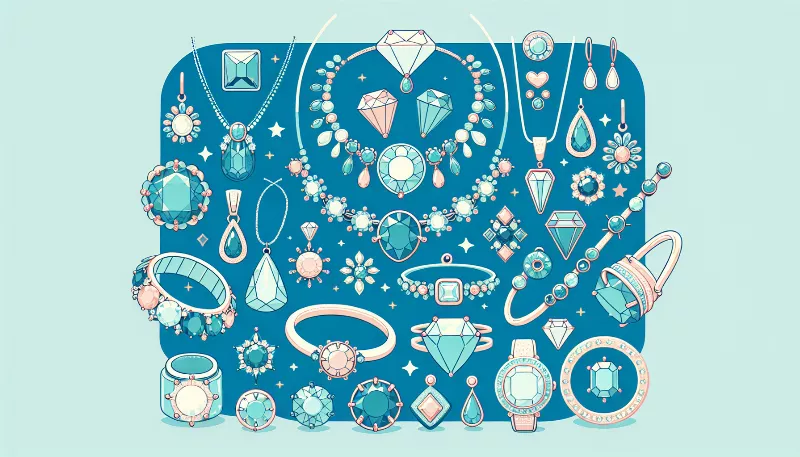How can I tell if a piece of jewelry is made from high-quality metal?
Discover the secrets to identifying premium metal jewelry. Learn the hallmarks of quality and ensure your next piece is top-notch!

Discover the Luster of Luxury: Identifying High-Quality Metal in Jewelry
Are you on a quest to find that perfect piece of jewelry that doesn't just shine but also stands the test of time? Understanding the markers of high-quality metal in jewelry is not just empowering—it's essential for any savvy collector or fashion enthusiast. Let's embark on a glittering journey to uncover the hallmarks of premium metal craftsmanship!
The Weight of Quality: Heft and Feel
One of the first telltale signs of high-quality metal is its weight. Precious metals like gold, silver, and platinum have a satisfying heft to them. When you pick up a piece of jewelry, it should feel substantial and solid in your hand. If it feels suspiciously lightweight, it might be a sign that it's made from a lower-quality alloy or even a clever imitation.
Marked for Excellence: Hallmarks and Stamps
Authenticity often leaves a mark—quite literally! High-quality jewelry is typically stamped with hallmarks that indicate the metal's purity. For example, gold jewelry might be marked with '18K' or '750' to signify 75% gold content, while sterling silver pieces are often stamped with '925,' denoting 92.5% silver. These tiny inscriptions are a jeweler's pledge of quality, so grab a magnifying glass and look for these crucial clues.
Surface Sleuthing: Examining the Finish
A mirror-like finish or a smooth satin sheen can be indicators of a well-crafted piece of jewelry. High-quality metals allow for a finer polish, resulting in a lustrous surface that lesser metals can't quite achieve. Be on the lookout for any signs of peeling or flaking, as these are red flags that the piece may be plated rather than solid metal. Additionally, check for scratches or dents; while some wear is normal, excessive marks might indicate a softer, less durable metal.
Color Consistency: A Uniform Hue
Precious metals boast a consistent color throughout. If you notice any discoloration or variations in shade, it could be a sign that the jewelry is made from an inferior metal or coated with a thin layer of precious metal. High-quality gold, for instance, should maintain its warm glow, while platinum exudes a cool, steely elegance without any uneven tones.
Magnetic Attraction: The Magnet Test
Here's a simple trick that can reveal a lot about the metal's composition: the magnet test. Precious metals like gold, silver, and platinum are not magnetic. If a magnet attracts your jewelry, it's likely made with a significant amount of non-precious metals. However, keep in mind that this test isn't foolproof, as some non-magnetic metals are also not considered high-quality.
Professional Prowess: Seek Expert Advice
If you're still unsure about the quality of your jewelry, don't hesitate to consult a professional. Jewelers and appraisers have the expertise and tools to accurately assess the metal's quality. They can perform tests that are not readily available to the public, such as acid tests or electronic testing, to determine the true content of the metal.
In conclusion, becoming adept at identifying high-quality metal in jewelry is a blend of art and science. By paying attention to weight, hallmarks, finish, color, and magnetic properties—and when in doubt, consulting a professional—you'll be well-equipped to select pieces that are as enduring as they are exquisite. Embrace the sparkle of knowledge, and let your jewelry collection shine with the unmistakable gleam of quality!










